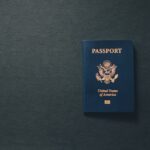Photography is the process of capturing light using a camera to produce an image. This powerful medium allows us to preserve moments in time and share them with others. Understanding the fundamentals of photography is crucial for anyone seeking to enhance their travel photography skills.
One of the most critical concepts in photography is exposure, which refers to the amount of light that reaches the camera’s sensor. A well-exposed photograph exhibits a balance between light and shadow, resulting in a visually appealing image. Mastering the control of exposure through aperture, shutter speed, and ISO settings is essential for achieving desired results in various lighting conditions.
Composition is another vital aspect of photography, referring to the arrangement of elements within the frame. Techniques such as the rule of thirds, leading lines, and framing can help create visually engaging and balanced photographs. Understanding the basics of focal length, depth of field, and perspective can significantly impact the visual narrative of your travel photos.
Additionally, having a thorough knowledge of your camera’s settings and functions, as well as basic editing techniques, can help you capture and enhance impressive travel photographs.
Key Takeaways
- Understanding the basics of photography is essential for capturing great travel photos.
- Choosing the right gear, such as a lightweight camera and versatile lens, is crucial for travel photography.
- Finding the perfect lighting, such as golden hour or soft natural light, can greatly enhance your travel shots.
- Framing and composition techniques, like the rule of thirds and leading lines, can make your travel photos more visually appealing.
- Capturing authentic moments and emotions can bring your travel photos to life and tell a compelling story.
Choosing the Right Gear for Travel Photography
Camera Selection
The most important piece of equipment for any photographer is their camera. Whether you prefer a compact point-and-shoot camera or a professional DSLR, it’s important to choose a camera that suits your needs and skill level. Consider factors such as sensor size, megapixels, and lens compatibility when selecting a camera for travel photography.
Essential Accessories
In addition to a camera and lens, other essential gear for travel photography includes a sturdy tripod for stability, especially in low light conditions, and extra batteries and memory cards to ensure you never miss a shot. A camera bag or backpack with padded compartments can help protect your gear while on the move.
Taking Your Photography to the Next Level
For those looking to take their photography to the next level, accessories such as filters, external flashes, and remote shutter releases can also enhance the quality of your travel photos. Ultimately, choosing the right gear for travel photography depends on your individual preferences, budget, and the type of photography you plan to pursue.
Finding the Perfect Lighting for Your Shots

Lighting plays a crucial role in photography and can greatly impact the mood and quality of your travel photos. When it comes to finding the perfect lighting for your shots, it’s important to consider the time of day and weather conditions. The golden hours of sunrise and sunset often provide soft, warm light that can enhance the beauty of landscapes and portraits.
On the other hand, midday sun can create harsh shadows and overexposed highlights, making it challenging to capture well-balanced images. Cloudy or overcast days can also provide diffused light that is ideal for capturing details and textures in your travel photos. In addition to natural light, artificial lighting sources such as street lamps, neon signs, and candlelight can add an interesting and atmospheric element to your travel photography.
Understanding how to work with different lighting conditions and using techniques such as backlighting and fill flash can help you create compelling and dynamic images. Furthermore, experimenting with long exposures and light painting techniques can add a creative and unique touch to your travel photos. Ultimately, finding the perfect lighting for your shots requires observation, patience, and a willingness to adapt to different situations while on your travels.
Framing and Composition Techniques
| Technique | Description |
|---|---|
| Rule of Thirds | A composition technique where the frame is divided into nine equal segments, and important elements are placed along the lines or at the intersections. |
| Leading Lines | Lines within the image that lead the viewer’s eye to the main subject or focal point. |
| Frame within a Frame | Using elements within the image to create a frame around the main subject, drawing attention to it. |
| Balance | Arranging elements within the frame to create a sense of visual balance and harmony. |
| Foreground, Middleground, Background | Creating depth in the image by including elements in the foreground, middleground, and background. |
Framing and composition are essential elements of photography that can greatly impact the visual storytelling of your travel photos. The rule of thirds is a fundamental composition technique that involves dividing the frame into nine equal parts using two horizontal and two vertical lines. Placing key elements along these lines or at their intersections can create a balanced and visually appealing composition.
Leading lines are another powerful composition technique that can guide the viewer’s eye through the image and create a sense of depth and movement. Whether it’s a winding road, a row of trees, or a riverbank, leading lines can add visual interest and draw attention to the main subject of your travel photo. Additionally, framing is a technique that involves using elements within the scene to create a border around the main subject.
Whether it’s an archway, window, or natural foliage, framing can add depth and context to your travel photos while drawing attention to the focal point. Furthermore, experimenting with different perspectives such as low angles or bird’s eye views can add a unique and dynamic element to your compositions. Understanding how to use negative space, symmetry, and patterns can also help you create visually striking travel photos.
Ultimately, mastering framing and composition techniques requires practice, observation, and a willingness to experiment with different approaches to storytelling through your images.
Capturing Authentic Moments and Emotions
One of the most rewarding aspects of travel photography is capturing authentic moments and emotions that tell a story about a place or its people. Whether it’s a candid street scene, a local festival, or a spontaneous interaction with a stranger, capturing genuine emotions in your travel photos can create a powerful connection with your audience. To capture authentic moments and emotions, it’s important to be observant and patient while exploring new destinations.
Pay attention to body language, facial expressions, and interactions between people to anticipate and capture genuine moments in your travel photography. In addition to being observant, building rapport with your subjects can help create a comfortable and natural environment for capturing authentic moments. Whether it’s through conversation, gestures, or simply being respectful of personal space, establishing trust with your subjects can lead to more genuine and emotive portraits.
Furthermore, being open-minded and respectful of cultural differences can help you approach sensitive subjects with empathy and understanding. Ultimately, capturing authentic moments and emotions in your travel photography requires empathy, patience, and a willingness to connect with the people and places you encounter on your journeys.
Editing and Enhancing Your Travel Photos

Refining Your Travel Photos
Editing and enhancing your travel photos is an essential step in the photography process that allows you to refine and elevate the visual impact of your images. Whether it’s adjusting exposure, contrast, or color balance, editing software such as Adobe Lightroom or Photoshop can help you fine-tune the details of your travel photos. Additionally, cropping and straightening your images can help improve composition and remove distracting elements from the frame.
Adding Creative Flair
Experimenting with creative effects such as black and white conversion or selective color adjustments can add a unique and artistic touch to your travel photos. In addition to technical adjustments, retouching portraits or removing unwanted objects from your travel photos can help create polished and professional-looking images. However, it’s important to maintain authenticity and avoid over-editing that may compromise the integrity of the original scene.
Preserving Authenticity
Furthermore, preserving the natural beauty of landscapes or cultural authenticity in documentary-style photography is essential when editing your travel photos. This ensures that the edited images remain true to the original scene and do not lose their emotional impact.
Approaching Editing with Intention
Ultimately, editing and enhancing your travel photos should be approached with intention and creativity to bring out the best in your images while staying true to your vision as a photographer.
Sharing Your Travel Photography with the World
After capturing, editing, and enhancing your travel photos, sharing them with the world is an exciting way to connect with others and showcase your experiences through photography. Whether it’s through social media platforms such as Instagram or Facebook, creating an online portfolio on websites like Flickr or 500px, or submitting your work to photography contests or exhibitions, there are countless ways to share your travel photography with a global audience. Additionally, collaborating with travel blogs or publications can provide opportunities to reach new audiences and share your unique perspective through visual storytelling.
In addition to online platforms, printing your travel photos as fine art prints or creating photo books can provide tangible ways for others to experience your photography. Whether it’s selling prints at local markets or galleries or creating personalized photo books for friends and family, sharing physical copies of your travel photos can create meaningful connections with others. Furthermore, participating in photography communities or workshops can provide valuable feedback and support from fellow photographers while expanding your network within the photography industry.
Ultimately, sharing your travel photography with the world is an opportunity to inspire others, build meaningful connections, and leave a lasting impact through your visual storytelling.
If you’re looking to improve your travel photography skills, you might want to check out this article on Eustis Ghost Tour. This article provides valuable tips and tricks for capturing stunning images while exploring new destinations. Whether you’re a beginner or an experienced photographer, you’re sure to find some helpful advice to enhance your travel photography.
FAQs
What is travel photography?
Travel photography is the act of capturing images while traveling to different locations. It involves documenting the people, landscapes, and cultures encountered during the journey.
What are some essential travel photography tips for beginners?
Some essential travel photography tips for beginners include:
1. Researching the destination and its culture before the trip.
2. Packing light and only bringing essential photography gear.
3. Making use of natural light for outdoor shots.
4. Experimenting with different angles and perspectives.
5. Taking candid shots to capture authentic moments.
6. Keeping camera equipment safe and secure while traveling.
What equipment do I need for travel photography?
The essential equipment for travel photography includes a digital camera, extra batteries, memory cards, a versatile lens (such as a wide-angle or zoom lens), a tripod, and a camera bag for easy transportation.
How can I improve my composition in travel photography?
To improve composition in travel photography, beginners can:
1. Use the rule of thirds to create balanced and visually appealing images.
2. Look for leading lines and framing elements to draw attention to the main subject.
3. Experiment with different perspectives, such as shooting from low angles or overhead.
4. Pay attention to the background and eliminate any distracting elements.
What are some common mistakes to avoid in travel photography?
Common mistakes to avoid in travel photography include:
1. Overpacking camera gear and accessories.
2. Ignoring the local culture and customs when taking photos of people.
3. Relying too heavily on post-processing to fix poorly composed or exposed images.
4. Not backing up photos regularly during the trip.
5. Forgetting to capture the details and smaller moments that make a destination unique.


